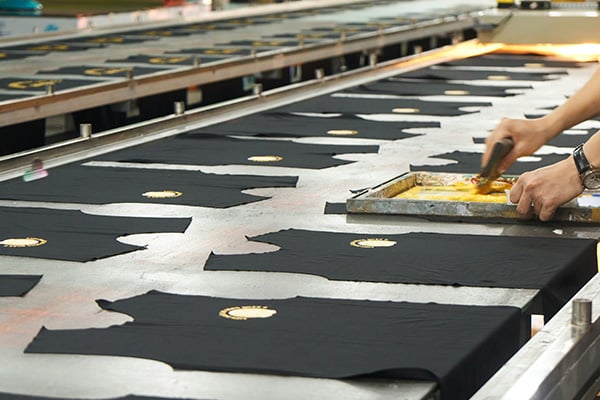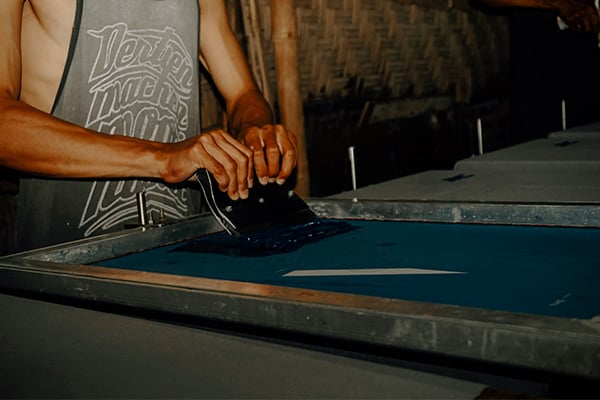Silk screen printing, also known as screen printing, is a traditional technique that has been used for centuries to transfer images onto various materials. It might be old fashioned, but it remains a popular choice for many customers. It's a fascinating process…
History
Silk screen printing has its origins in ancient China, where it was developed during the Song Dynasty (960–1279 AD). Back then, it was used for decorating fabric and paper.
As time went on the method gradually spread to other Asian countries and eventually to the West. It became popular in the 20th century as an artistic medium and quickly became the versatile commercial printing technique which we know and love today.
Process
Silk screen printing involves a few key steps:
Design Creation: The process begins with your design, which can be anything from simple text to a complex graphic. The design is then transferred onto a see-through overlay.
Preparing the Screen: Traditionally, silk was used for the screen, but today, synthetic materials like polyester are more common. The screen is coated with a light-sensitive emulsion.
Transferring the Design: The transparent overlay with the design is placed on the screen, and it is exposed to light. The light hardens the emulsion, except where the design blocks it. It's a bit like a photographic negative.
Washing the Screen: The screen is washed, and the unhardened emulsion is rinsed away, leaving the design as a solid stencil.
Applying the Ink: The screen is placed over the material to be printed on. Ink is applied to the screen and pressed through the stencil using a squeegee.
Curing: Finally, the ink is cured (dried), often using heat, to set the print.
Materials and Applications

Silk screen printing is incredibly versatile and can be used on a variety of materials, including textiles, metals, wood, paper, glass, and plastic. This makes it ideal for creating custom clothing, posters, signage, and more.
Advantages of Silk Screen Printing
Durability: Screen prints are known for their durability and resistance to wear, especially on clothing.
Vibrancy: This method can produce vibrant colours, even on dark materials.
Versatility: Suitable for various materials and surfaces.
Cost-Effectiveness: For large orders, it's a highly cost-effective printing method.
Consistency: Produces uniform, high-quality prints in large quantities.
Disadvantages of Silk Screen Printing
Setup Time: The initial setup can be time-consuming, making it less ideal for small orders.
Complexity with Multiple Colours: Printing designs with multiple colours can be complex, as each colour requires a separate screen.
Silk Screen Printing vs. Other Printing Methods
Compared to other printing methods like digital printing or heat transfer, silk screen printing stands out for its ability to produce durable and high-quality prints in bulk. However, for short runs or designs with many colours, other methods might be easier.
Evolving Technology in Silk Screen Printing

Although it's a traditional craft, silk screen printing has seen significant technological advancements. Digital screen making processes, automated presses, and better inks have made the process faster, more reliable, and eco-friendlier.
Conclusion
Silk screen printing remains popular due to its versatility, durability, and quality. Whether for art or commercial projects, it offers a unique blend of tradition and innovation.
Evans Graphics
At Evans Graphics, while we specialise in a wide range of printing services, we love the art and science of silk screen printing. So, if it's something you'd like to experiment with give us a call and we can talk through your options.


